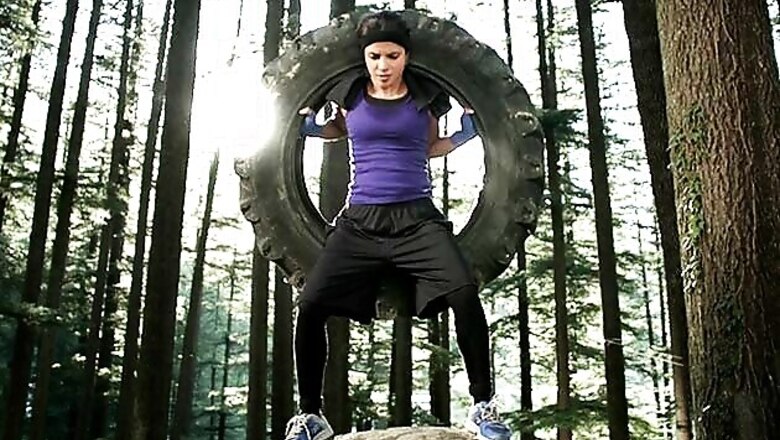
views
There's no denying the fact that filmmakers promote brands through their projects to woo consumers. Even though the results aren't always impressive, advertisers still feel brand placement in films is the ideal way to resonate with the viewers. But how would you react when a film is rewritten to incorporate prominent brands into the plot? Would you, as a cinegoer continue to watch a film that promotes a hospital you had only read about in the papers? Agreed, brand placement in films is important for immediate product recognition at the time of purchase, but would you want your cinematic experience to suffer just because the makers weaved in inapt ads? The answer is 'No', right?
Like any other viewer, I was a little shocked with the blatant product placements in Priyanka Chopra-Darshan Kumar starrer 'Mary Kom'. The film, which has been written about, debated and discussed for almost a year because it is based on the life of our five-time World Champion, gets a tad annoying because it grants screen time to popular brands.
For instance, a prominent iodised salt brand finds way into Mary Kom's kitchen. It is a bit unconvincing when Mary, while talking to the journalist (who interviewed her), quips, "Kabhie mere haath ka bhi kha ke dekho...", and the camera zooms in on this prominent salt brand. Was the sequence really needed? No, because the same conversation could have happened elsewhere, in one of her rooms, on the streets or even in the boxing ring! Also, Priyanka's statement, "Hum sab player log bhi iss des ka namak khaya hai" won't go down well with those who don't appreciate product placement in films.
While we all liked the gutsy Mary for picking fights with boys and taking on a professional fighter to earn quick 300 bucks, slipping a reference to a prominent ice-cream brand looked forced. Since there were hardly any kids watching the film, I'm not sure if the consumers were really sensitised by this practice of brand placement.
In the film, each time Priyanka enters the boxing ring, the sticker of a well-known household consumer durables brand is displayed on her head gear. In another sequence, Priyanka is seen having gol gappas and a popular roadside chaat outlet makes an appearance.
Honestly, Priyanka's continuous attempts to promote products even while confirming pregnancy, opting for sugar substitute and reliving her painful muscle can get to any dedicated movie buff. One can ignored them had these been subtle, but what to do when these short promotional sequences drill their message into your head, repeatedly?
If the makers of 'Mary Kom' thought product placement helped in making a gritty take more real, they are mistaken. Agreed, Priyanka was perfect at illustrating brands' attributes, but cinegoers are least bothered. And since product placements pervade 'Mary Kom' right from the moment it begins till it finishes, all that cine-goers remember are the items that were advertised. While that's good news for the advertisers, the truth is that many viewers feel cheated. Don't brands use TV commercials to peddle products? Can't makers introduce popular brands, if it's imperative, subtly into the narrative? Overtly done, in-film branding is jarring, and distracts viewers from the film's focus - Mary Kom's adversities and achievements.
####




















Comments
0 comment